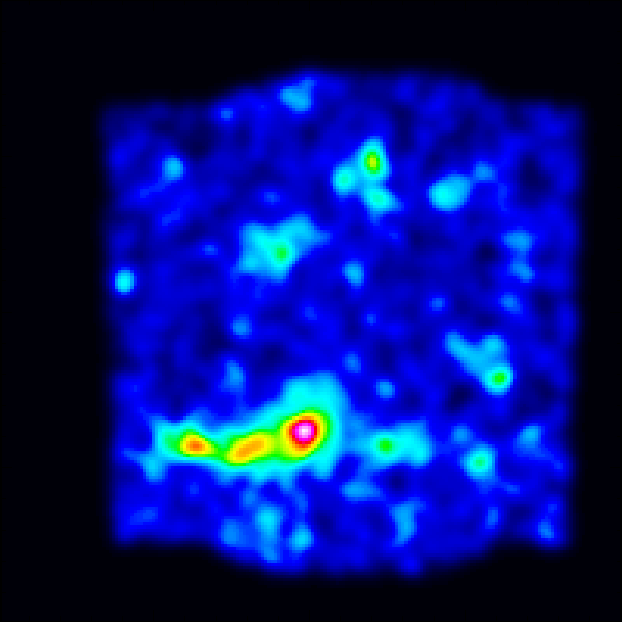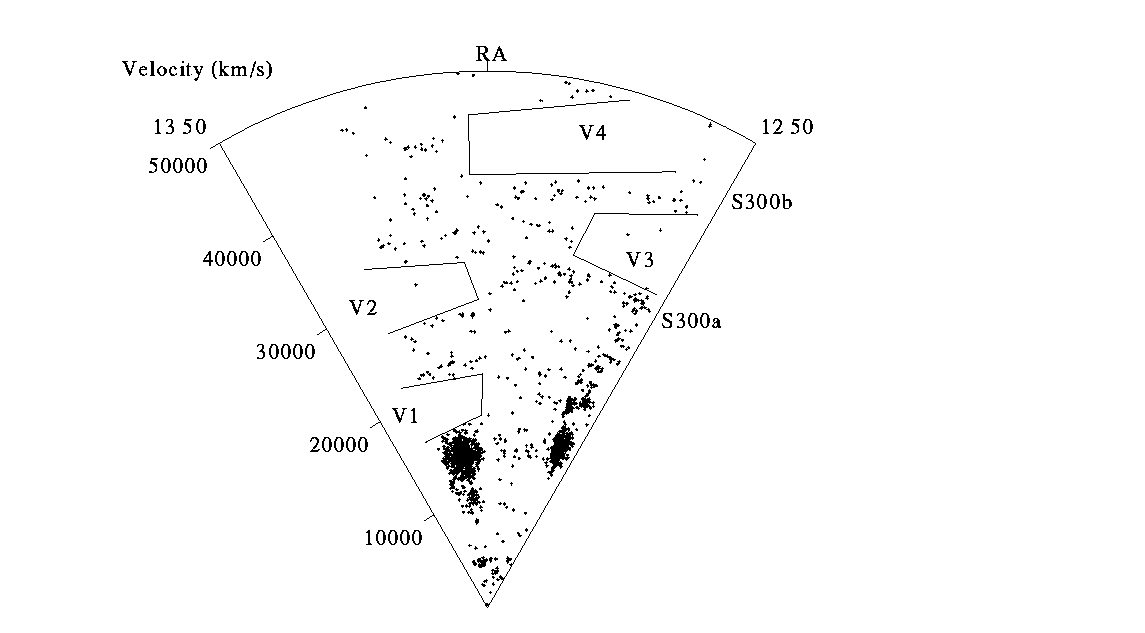A GUIDED TOUR OF THE SHAPLEY CONCENTRATION SUPERCLUSTER:
Introduction
The Shapley Concentration is the most remarkable feature (Scaramella et al. 1989; Vettolani et al. 1990) which appears studying the distribution of the Abell--ACO clusters of galaxies (Abell 1958; Abell, Corwin \& Olowin 1989). Zucca et al. (1993) have analyzed, through a percolation algorithm, superclusters of Abell--ACO clusters at various density excesses $f$. They found that at every density contrast the Shapley Concentration stands out as the richest supercluster of the entire sky within a distance of 300 Mpc; in particular, at f about 2 (which corresponds to a percolation radius of about 25 Mpc) it has 25 members at a mean distance of 140 Mpc contained in a rectangular box of comoving sizes 32 X 55 X 100 Mpc. The central part of this concentration is already evident at high density excesses (about 100, corresponding to a percolation radius of 6 Mpc) and is formed by three condensations: A3528--A3530--A3532, A3571--A3572-- A3575 and A3556--A3558--A3560--A3562--A3564--A3566. The three clusters A3556, A3558 and A3562 (with the poor clusters SC 1329 -313 and SC1327 -312 in between A3558 and A3562) form an aligned structure, elongated for 3^o along the East--West direction and can be considered as the core of the Shapley Concentration. The Shapley Concentration appears to be very rich and prominent also studying the bi--dimensional distribution of optical galaxies (Raychaudhury 1989; Raychaudhury et al. 1991) and the spatial distribution of both IRAS galaxies (Allen et al. 1990) and X--ray clusters (Lahav et al. 1989). Indeed, this region contains 6 of the 46 X--ray brightest clusters of the sky at bII>20degree (Edge et al. 1990), i.e. 13 % of the X--ray brightest clusters reside in only 1.4 % of the sky. Raychaudhury et al. (1991), assuming that the parameter M* of the optical luminosity function of the clusters can be considered a standard candle, concluded that in this region there may be large deviations from the pure Hubble flow. Moreover, on the basis of the available X--ray maps, they noticed that the fraction of multiple clusters in this concentration is more than a factor 5 higher than in the ``field". Both these facts suggest that this supercluster could be dynamically active, in the sense that the processes like cluster evolution due to cluster--cluster or cluster--group merging may be enhanced, as expected in an high density environment. The Shapley Concentration is also likely to be an important player in explaining the peculiar motion of the Local Group with respect to the Cosmic Microwave Background frame. In fact, Scaramella et al. (1989, 1991) pointed out that this supercluster may be responsible for a significant fraction (about 30 %) of the Local Group peculiar motion, adding its dynamical pull to that from a closer overdensity of galaxies at 40 Mpc. The latter overdensity of galaxies, dubbed ``Great Attractor", was suggested to be the main source of the Local Group acceleration (Lynden--Bell et al. 1988; Lynden--Bell, Lahav & Burstein 1989; Faber & Burstein 1988; Dressler 1988). The suggestions of Scaramella et al. (1989, 1991), on the contrary, would imply a significantly larger coherence scale for the peculiar velocity flow, a fact which seems to be supported by recent findings (Willick 1990; Mathewson, Ford & Buchhorn 1992). Also, Tully et al. (1992) suggested that these two ``attractors'' could be part of a single elongated planar structure, extending for about 450 Mpc.

|
Distribution of optical galaxies to bJ=19.5 in the plate 444 from the COSMOS catalogue, at the center of the Shapley Concentration. Note that the overdensities are clusters. All clusters show multiple nuclei. In the bottom left, it is clear the presence of a "cluster complex" formed by three ACO clusters (A3558, A3562 and A3556) and two poor clusters (SC1329-313 and SC1327 -312) |

|
Wedge diagram of the galaxy distribution in our samples. We show 1728 galaxies in the velocity range [0-50000] km/s. Note the clear presence of the A3558 and A3528 cluster complexes ([10000-20000] km/s) and a number of voids. |
| Back | Introduction | Large Scale | Optical | X-ray | Radio |